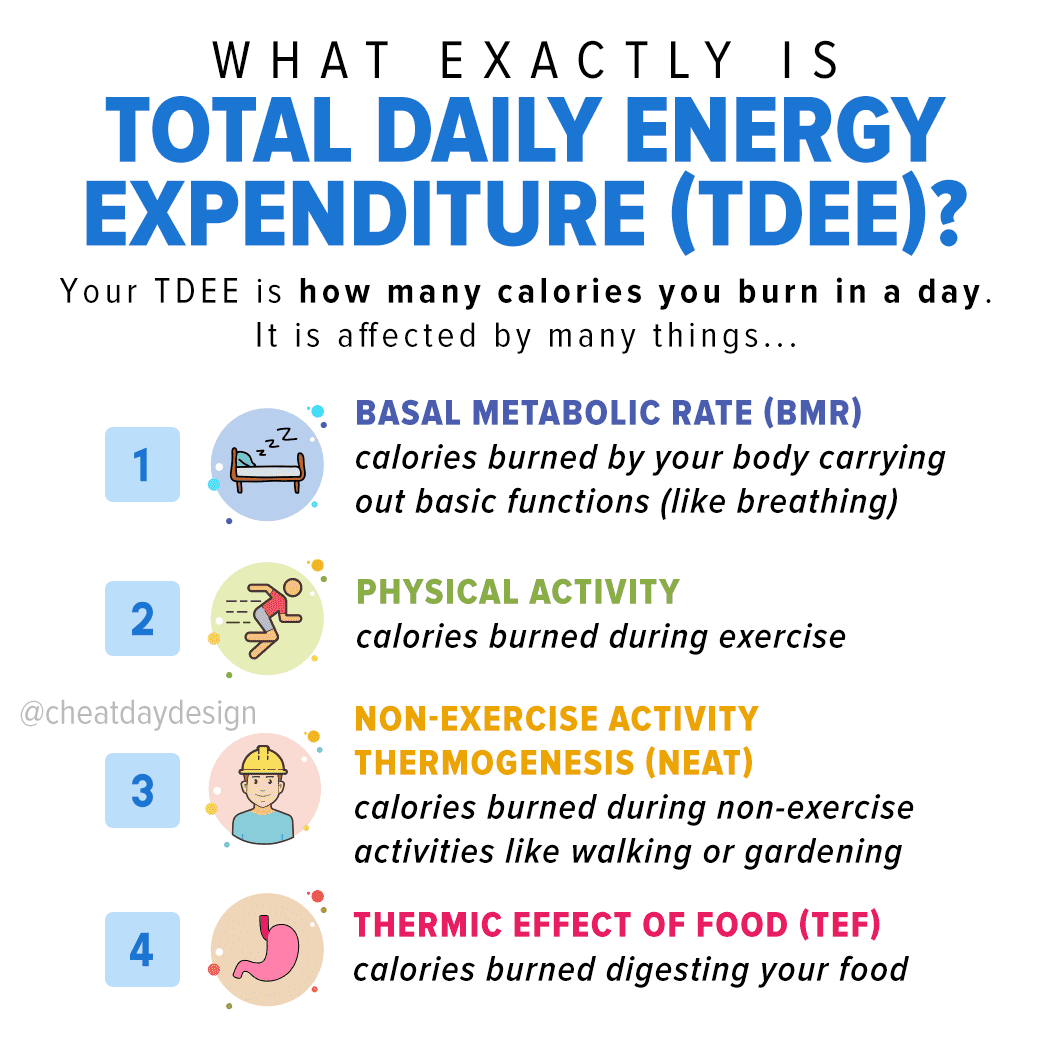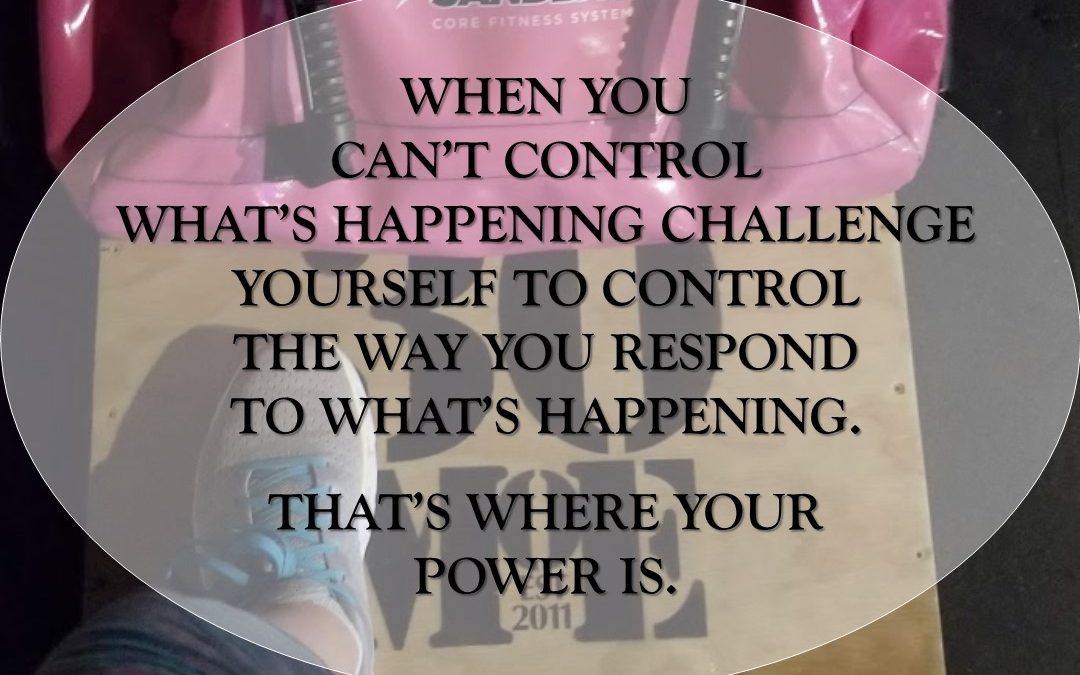Do you ever wonder how many calories you burn throughout the day, what actually does burn calories, or what exactly a calorie is? Let me tell you! A calorie is a measure of the amount of heat it takes to raise the temperature of one kilogram of water one degree Celsius. It’s all sciency stuff, but basically it’s a measure of your body’s ability to produce heat through body processes. There are many factors that contribute to how many calories you burn in a day. The total amount of calories is called your Total Daily Energy Expenditure (TDEE).
The TDEE is different for everyone. Yes, it’s the total number of calories each person burns in a day, but each person is different so the number of calories is different. The TDEE is influenced by gender, body size, body composition, genetics, and activity level. I told you there were many factors.
The three basic components of TDEE are basal metabolic rate, physical activity, and the thermic effect of food. These three influence how many calories an individual burns in a day. The biggest component of TDEE is your basal metabolic rate followed by activity then lastly by the thermic effect of food. Click HERE to calculate your estimated TDEE.

Basal metabolic rate is the amount of calories burned at rest. Basically if you sat around all day, you’d burn a specific amount of calories to support organ function, brain function, breathing, circulation, etc. The more muscle mass you have, the higher this number is. Your muscles are workers in the body so it makes sense that you burn more calories at rest with more muscles working. When you consume caffeine or other stimulants, your basal metabolic rate will increase temporarily. Whereas, lack of sleep can reduce your basal metabolic rate temporarily. While this is the biggest component of your TDEE, you can get a bigger change in your TDEE from exercising more.
Caloric burn from activity can be broken down into purposeful exercise and non-exercise activities. Basically, move more often and with more intensity. You have complete control over this component. Participating in a HIIT (high intensity interval training program, like 30MoE) program helps burn more calories after the exercise is done, which increases your TDEE – in addition to many other benefits when compared to regular steady-state exercise. Non-exercise activity relates to moving your body more. This can be cleaning your house, walking, yard work, standing vs sitting, stairs vs elevator, etc. All of these get your body moving and contribute to TDEE.
The process of breaking down and digesting food burns calories also. This thermic effect of food contributes minimally to your TDEE, but it is also something you have control over. It is highest for unrefined, whole foods. Some foods like lean meats, celery, broccoli, and whole grains actually end up having zero calories because the body burns more calories to break them down than they actually have. Certain foods also have properties that will increase your metabolism; hot peppers, cinnamon, green tea, lean proteins, coconut oil, etc.
Here are ways you can increase your TDEE:
- Exercise more often
- Exercise using high-intensity intervals
- Move your body more
- Eat more vegetables
- Get adequate sleep
- Add spices to your meals
- Drink green tea
- Strength train to build more muscle mass
All of this is advice you’ve heard before and probably already know. The only difference is now you know why. The why gives it purpose and meaning. Use the knowledge of why and make some simple changes to your daily routine to be the best metabolic machine ever!

